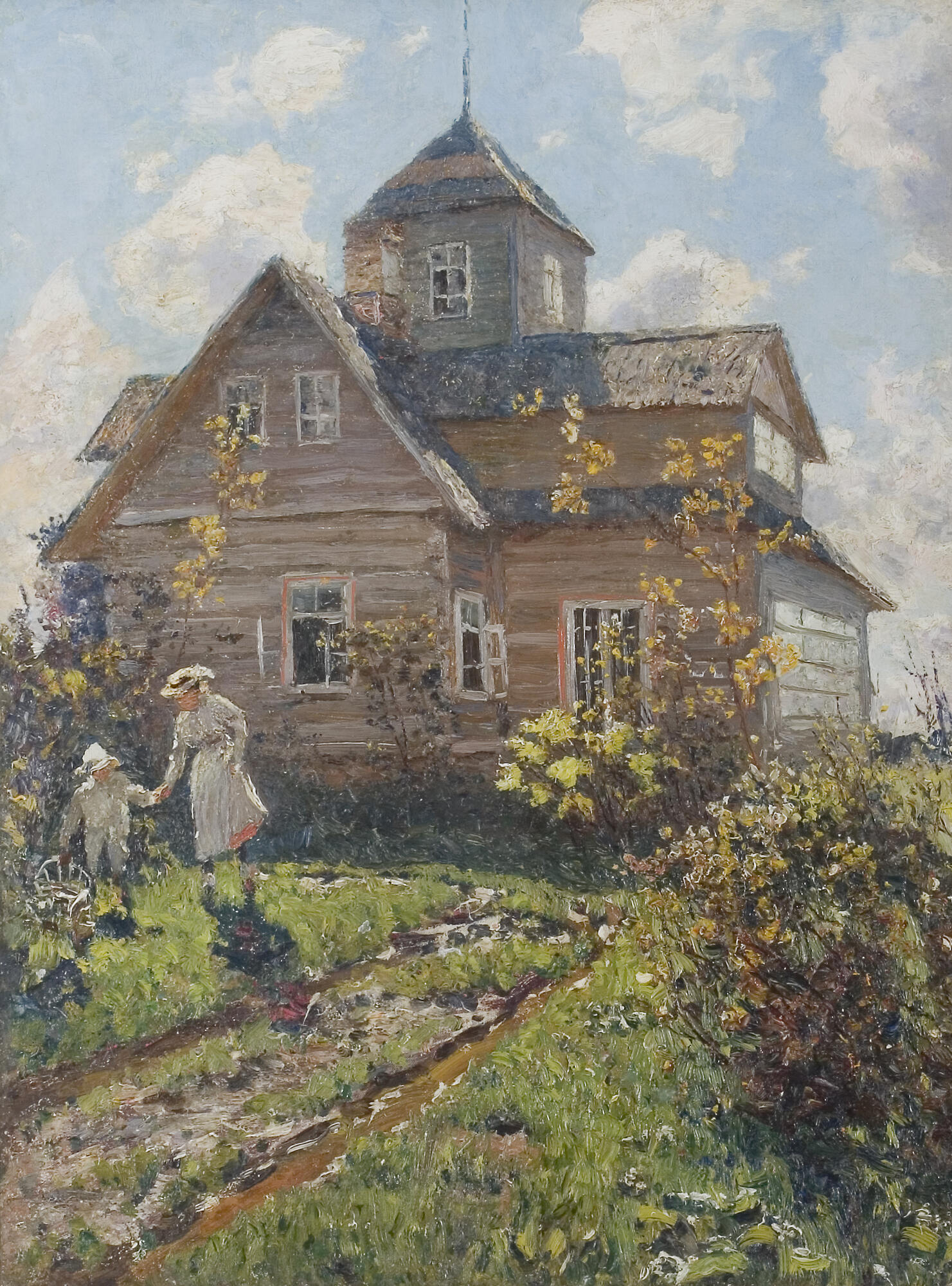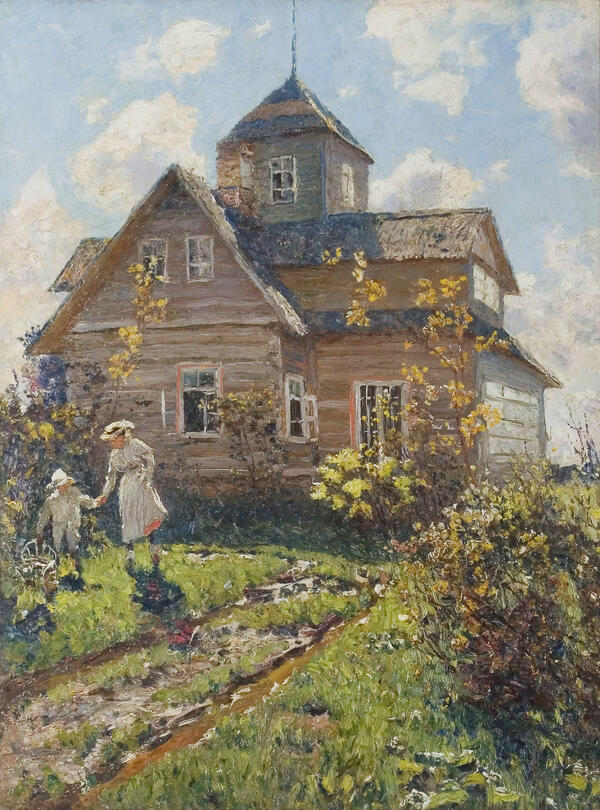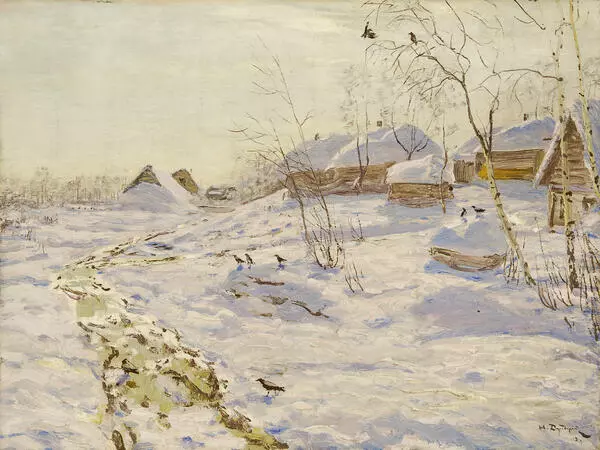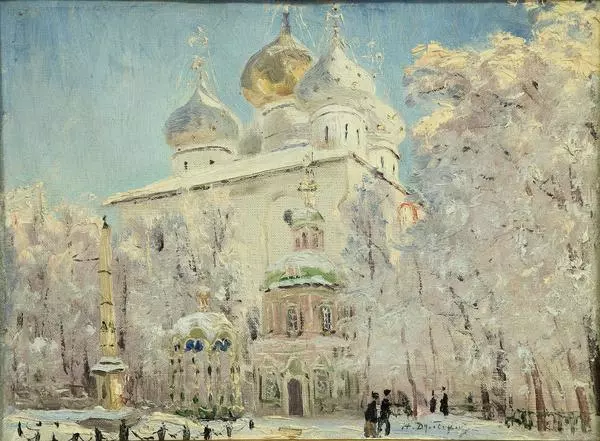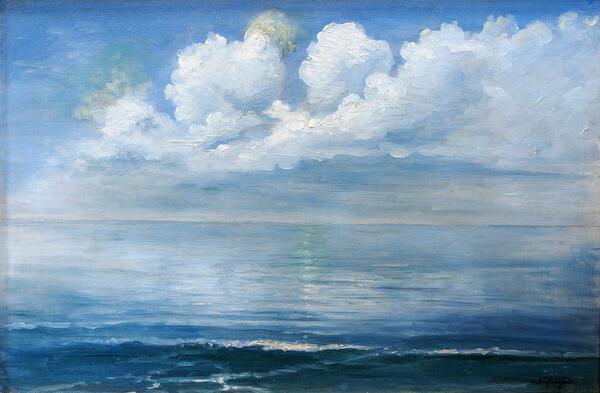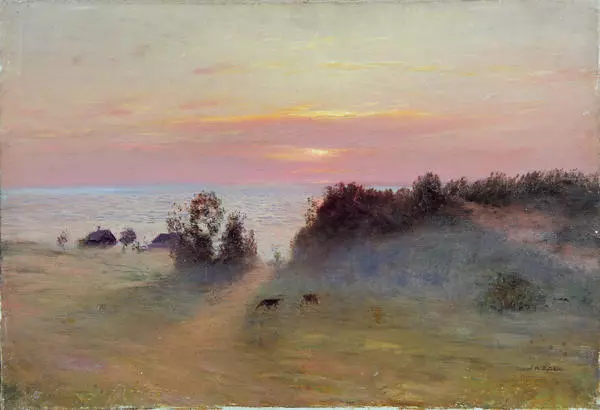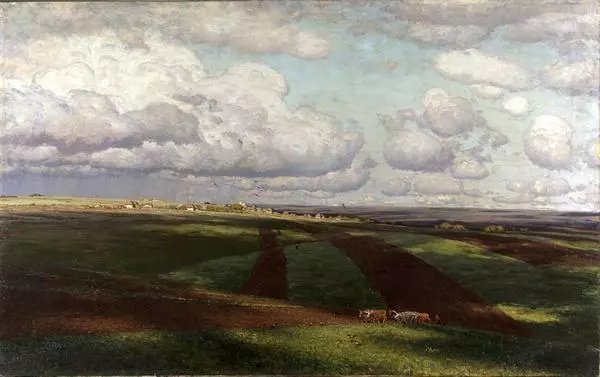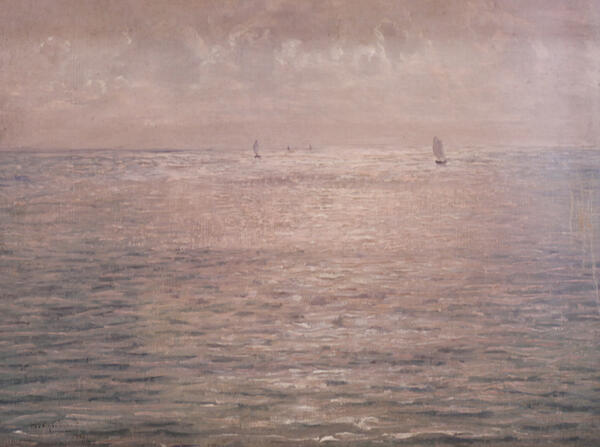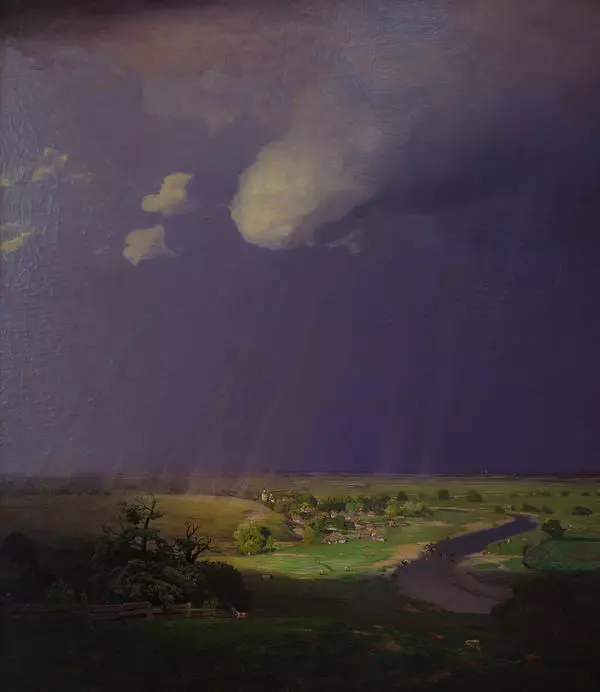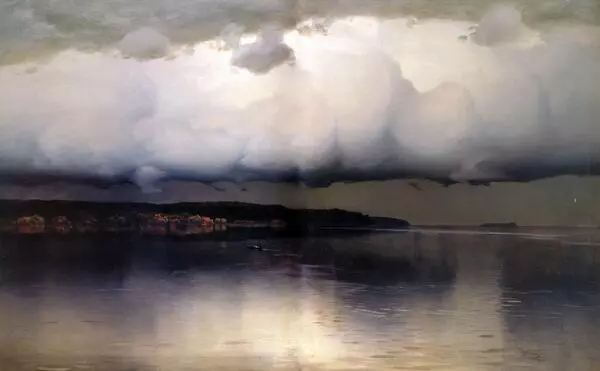Nikolay Nikanorovich Dubovskoy was a member of the Society for Travelling Art Exhibitions, landscape painter, and teacher. He was born in 1859 in Novocherkassk. From 1877 to 1881, he studied at the Academy of Fine Arts with Mikhail Konstantinovich Clodt. He began teaching at the Academy in 1909 and led a landscape workshop.
Today, Dubovskoy is a little-known artist, but during his lifetime, even Emperor Alexander III and the philanthropist Pavel Tretyakov rivaled for the possession of his paintings. His works were on a par with those of Isaac Levitan, Arkhip Kuindzhi, and Vasily Polenov, and his art was admired by Ilya Repin. He created soulful, masterfully painted images of Russian nature, and continued the tradition of a wide, panoramic landscape of his teacher Mikhail Clodt. Dubovskoy was considered successor of Alexei Savrasov, Fyodor Vasilyev and Arkhip Kuindzhi. Nikolay Dubovskoy was one of the few Russian landscape painters who was awarded for participating in international art exhibitions in Paris, Munich and Rome. A representative of the academic St. Petersburg school, Dubovskoy was one of the first to understand and recreate the innovative Impressionist method of painting. He managed to combine the principles of lyrical, emotional landscape and focus on light and color, boldly liberating his style.
In the early 20th century, the artist Nikolay Dubovskoy enjoyed coming to Sillamäggi for a summer vacation to work en plein air by the sea and in the forest. There, Nikolay Nikanorovich had especially warm relationship with the family of the academician Ivan Petrovich Pavlov. There were many wonderful landscapes in Ivan Pavlov’s collection.
This house in the artist’s painting is his dacha in Sillamäggi. The plot of this small landscape composition “Dacha in Sillamäggi” is simple and concise. It has just rained, the door is open, and a child has run out into the fresh air with his mother. The sun has not yet regained its strength after the rain, but the sky has cleared of clouds, and now light clouds float on the high blue dome of the sky. The artist was able to emanate the diffused sunlight, against which the foliage flutters. The focal point here is the breathing of nature, the connection of people with it — that is what is dear to the artist’s heart. In this work, Dubovsky managed to capture and convey his fleeting impression of a real event taking place here and now.
Today, Dubovskoy is a little-known artist, but during his lifetime, even Emperor Alexander III and the philanthropist Pavel Tretyakov rivaled for the possession of his paintings. His works were on a par with those of Isaac Levitan, Arkhip Kuindzhi, and Vasily Polenov, and his art was admired by Ilya Repin. He created soulful, masterfully painted images of Russian nature, and continued the tradition of a wide, panoramic landscape of his teacher Mikhail Clodt. Dubovskoy was considered successor of Alexei Savrasov, Fyodor Vasilyev and Arkhip Kuindzhi. Nikolay Dubovskoy was one of the few Russian landscape painters who was awarded for participating in international art exhibitions in Paris, Munich and Rome. A representative of the academic St. Petersburg school, Dubovskoy was one of the first to understand and recreate the innovative Impressionist method of painting. He managed to combine the principles of lyrical, emotional landscape and focus on light and color, boldly liberating his style.
In the early 20th century, the artist Nikolay Dubovskoy enjoyed coming to Sillamäggi for a summer vacation to work en plein air by the sea and in the forest. There, Nikolay Nikanorovich had especially warm relationship with the family of the academician Ivan Petrovich Pavlov. There were many wonderful landscapes in Ivan Pavlov’s collection.
This house in the artist’s painting is his dacha in Sillamäggi. The plot of this small landscape composition “Dacha in Sillamäggi” is simple and concise. It has just rained, the door is open, and a child has run out into the fresh air with his mother. The sun has not yet regained its strength after the rain, but the sky has cleared of clouds, and now light clouds float on the high blue dome of the sky. The artist was able to emanate the diffused sunlight, against which the foliage flutters. The focal point here is the breathing of nature, the connection of people with it — that is what is dear to the artist’s heart. In this work, Dubovsky managed to capture and convey his fleeting impression of a real event taking place here and now.
